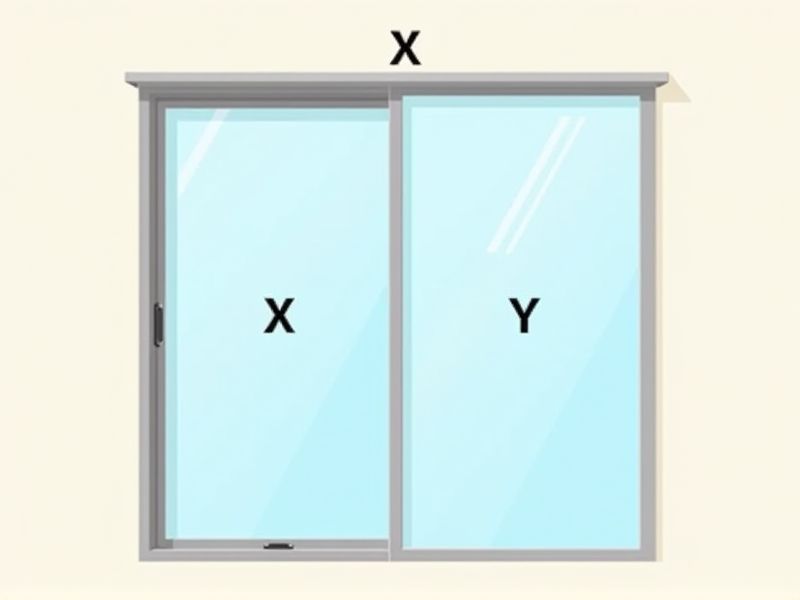
When selecting the right sliding glass door for your space, it's helpful to know the standard dimensions most commonly available. Standard sliding glass doors typically measure 80 inches in height and come in widths of 60, 72, or 96 inches to accommodate different room sizes. These dimensions are designed to fit most residential openings, making installation easier and often more cost-effective. Always check the specifications of your chosen door and measure your opening carefully to ensure a proper fit.
Frame Dimensions
The standard frame dimensions for sliding glass doors typically range from 60 to 72 inches in width and 80 inches in height. Most manufacturers design their sliding doors to accommodate various wall thicknesses, often between 4.5 to 6.5 inches. For optimal installation, ensure the frame is level and square, which is crucial for smooth operation and longevity. You should also consider your specific design preferences, as custom dimensions can be ordered to fit unique architectural requirements.
Glass Thickness
The standard glass thickness for sliding glass doors typically ranges from 1/8 inch to 1/4 inch, with most residential applications favoring 1/4 inch for optimal durability and insulation. Tempered glass is often recommended, as it is four to five times stronger than standard glass, significantly enhancing safety and resistance against impacts. Energy efficiency is crucial; double-pane options with a thickness of 3/16 to 1/4 inch offer improved insulation and UV protection. When selecting a sliding glass door, consider local building codes which may dictate minimum glass thickness for safety and energy compliance.
Door Panel Width
The standard width for sliding glass door panels typically ranges from 60 to 72 inches, providing ample access and natural light for residential spaces. Most door systems can accommodate multiple panels, enhancing the opening size, which can reach up to 12 feet in total width for expansive views. When considering installation, keep in mind that the height of these doors usually measures between 80 to 84 inches, aligning with common ceiling heights. Choosing a door with energy-efficient glass can improve thermal performance, reducing energy costs by up to 30%.
Track System Size
The standard sliding glass door typically features a track system measuring 1.75 inches in height and 2 inches in width, designed for smooth operation and durability. A higher-quality track system can support door panels weighing up to 300 pounds, ensuring seamless gliding performance. When selecting a sliding glass door, consider track materials, such as aluminum or vinyl, which significantly impact longevity and ease of maintenance. Your choice of track system can enhance energy efficiency, with options featuring weatherstripping that minimizes drafts and reduces heating or cooling costs by up to 30%.
Height Of Door
The standard height for a sliding glass door typically measures 80 inches, although sizes can vary depending on the manufacturer and architectural requirements. When selecting a sliding glass door, it's crucial to ensure it aligns with your home's design and meets local building codes. You might also consider custom heights that range from 72 to 96 inches for unique spaces or enhanced aesthetics. Properly fitted sliding glass doors can significantly improve energy efficiency, providing better insulation and reducing heating and cooling costs by up to 20%.
Width Of Door
The standard width for sliding glass doors typically ranges from 60 to 72 inches, catering to various architectural designs and spaces. Many options exist in the market, with common sizes including 72-inch, 96-inch, and even custom widths for unique requirements. You might find that a wider door allows for enhanced natural light and seamless indoor-outdoor transitions, making your living space feel more expansive. When selecting a sliding glass door, consider both width and frame materials, as these factors can significantly impact aesthetics and energy efficiency.
Sill Height
The standard sill height for a sliding glass door is typically between 3 to 6 inches, which ensures proper drainage and prevents water pooling. An optimal sill height enhances accessibility while maintaining the structural integrity of the door. Building codes may vary, so local regulations can influence the precise specifications, often requiring a height that complies with safety standards. When selecting a sliding glass door, consider the sill height to ensure it fits seamlessly into your living space and meets your usability needs.
Frame Depth
The standard frame depth for a sliding glass door typically ranges from 4 to 6 inches, ensuring structural integrity and optimal thermal performance. A deeper frame can enhance durability, minimizing air and water infiltration, which is crucial for energy efficiency. Your choice of frame depth can influence the overall energy rating of the door, potentially helping you save on heating and cooling costs. It's important to consider local building codes and climate conditions, as they may dictate specific frame depth requirements for sliding glass doors in your region.
Clearance Space
The standard clearance space for a sliding glass door typically ranges from 1 to 1.5 inches to ensure smooth operation and prevent obstruction. This space allows for proper ventilation and convenience, particularly in tight areas or near furniture. To enhance safety, your sliding door should also have at least 2 inches of surface elevation from the ground, which helps to minimize the risk of water damage. Maintaining these standards not only improves functionality but also extends the lifespan of the sliding glass door system.
Weatherstripping Size
Weatherstripping size is crucial for the performance of sliding glass doors, typically ranging between 1/4 to 1/2 inch in thickness. Properly sized weatherstripping can enhance energy efficiency by reducing air leakage, with studies showing that up to 30% of heating and cooling energy is lost through poorly sealed doors. To maximize effectiveness, choose weatherstripping made from durable materials like vinyl or silicone, which can last for years while maintaining their shape and function. Regular maintenance, including periodic checks for wear and tear, can significantly prolong the lifespan of your sliding glass door and improve your home's insulation.
